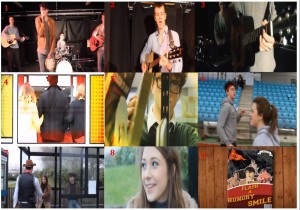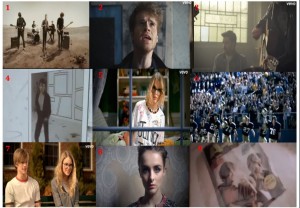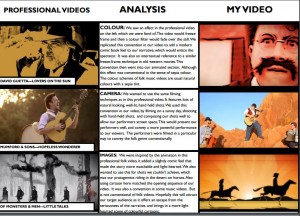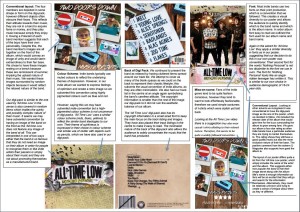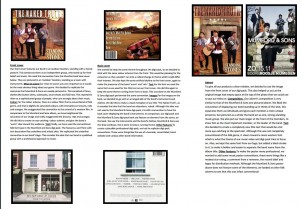What have you learned from your audience feedback?
Task: A VoiceThread on the audience feedback you have received during production and your response(s) to that feedback. The specific feedback and the specific impact it had on your products.
You are working in your production group for this and will submit the same product (all must contribute equally to the power point & discussion). You must introduce yourself when speaking and say what you have been considering and looking at.
Guidance
You may need to register a new account with VoiceThread.
Then you should create a Slideshow presentation, which refers to each set of feedback you have received and uses screenshots to link the feedback to the details of the production work under discussion. You should have received the following feedback:
- Pitch Feedback (Video)
- Specsavers (interview)
- Video Draft 1 (Self Assessment)
- Video Draft 2 (screen castify teacher)
- Video Draft 3 (youtube peer comments
- Video Draft 4 (filmed feedback of peers, plus teacher youtube comment)
- Digi Pack Photo Mock up (Feedback from peers – did they get the genre, star image)
- Digipack Draft 1 (screen castify from teacher)
- Digipack Draft 2 (paper feedback from peers)
- Advert (paper feedback from peers)
- Other feedback you may have received on final products – FINAL GOOGLE FORMS SURVEY RESULTS
The PowerPoint should include:
- A general sense of the feedback; includes likes, dislikes and suggested alternatives
- Quotes from your teacher, your class mates, other media students and people you have shared your work with.
- Feedback you’ve had on Facebook, Youtube or on other social media.
- Statistics from Questionnaires or YouTube metrics
- Screenshots from drafts of your video, digipack and advert to illustrate the features under discussion and the differences/impacts the FB had on your products i.e. before and after.
- Images of feedback documents / pitch presentation
Use this document to help you prepare your PowerPoint and discussion
You should then save your PowerPoint as a pdf document and upload it to VoiceThread.
Create a new VoiceThread and in the recording you should explain/develop the feedback featured in the Slideshow and also go into detail about how you responded to the feedback you received:
- What meaning did you want to encode in the video / digipack / advert? – mention genre, star image, narrative etc
- Did the audience have a preferred reading and if so what features did they pick up on? – Mention Hall (he is the main audience theorist)
- If the audience had a negotiated or oppositional reading, why do you think this was?
- Did you set yourself targets for the next draft?
- How did the production change in subsequent drafts?
- Did it change audiences’ reading?
You can use the highlighter tool in VoiceThread to draw attention to specific details in the pdf document that you are referring to.
A link to Adam Le Gallez’ VoiceThread:
A link to another version, not done on Voicethread but the contents is good.
Here is just some of the terminology you should aim to include as they are all linked to what you considered in the construction of your product and how it would have been received by your audience:
- feedback, advice, comments, critique, opinions, suggestions, evaluations, reviews, input, targets, aims, desires, responses, anecdotal (not official) verbal feedback, written feedback, statistical evidence, survey, questionnaire, recording, filmed feedback (all enabled me to):
- tweak, amend, improve, change, alter, adjust, recreate, modify, refine, revise, transform, extend, cut, delete, edit, colour correct, refilm (the following..(aspects to address like editing, composition, colour correction, narrative structure etc in order to address/include/apply/improve/change/refine/):
- preferred reading, negotiated reading, oppositional reading, narrative structure, character types, symbolic codes, semic codes, enigma, action, cultural competence and cultural codes, star image, metanarrative, ordinary, extraordinary, present, absent, binary oppositions, conflicts, demographics, psychographics, target audience, conventions, genre, repertoire of elements, contract, blueprint, label, predictable pleasure, pitch.
Advice
This is an examiner’s report on how to address this question – reflect, context, impact, limitations.
The most successful answers to Q3 explored the entire process of production, with candidates
reflecting clearly on how they had used feedback during as well as after completion of their work,
with links made both to research/ planning and outcomes in the products.
